
















































































































































































































By Kathi Caldwell-Hopper
If you are yearning to get out and enjoy the upcoming autumn days in the Lakes Region, there are many events sure to please, as well as the brilliant show of foliage on every mountain, hill, and landscape around New Hampshire.
Fall is apple picking season and there are good orchards throughout the Lakes Region and beyond. A few orchards in the area to consider when you want a day of autumn apple-picking fun are Cardigan Mountain Orchard at 1540 Mt. Cardigan Road in Alexandria (www.cardiganmtnorchard.com); McKenzie’s Farm at 71 Northeast Road in Milton (www.mckenziesfarm. com); Butternut Farm at 195 Meaderboro Road in Farmington (www.butternutfam.net) or Meadow Ledge Farm at 612 NH 129 in Loudon (www.meadowledgefarm.com). These are just a few of the many apple orchards with pick-your-own varieties in the area.
Bristol is home to the Annual NH Marathon, Half Marathon, 10K & Kids Events on Saturday, Oct. 5 starting at 9 a.m. The course takes place in the Newfound Lake area, with beautiful scenery.
The Marathon weekend is full of activities, including the Marathon Pasta Dinner on Oct. 4 from 5 to 7:30 pm at the Union Lodge, 61 Pleasant Street in Bristol. (The Masons host the dinner, and it is a great event: crocks pots full of many varieties of homemade sauces for runners and guests to choose from to top off pasta, with dessert to end the tasty meal.) Contact race@nhmarathon.com for pasta dinner information.
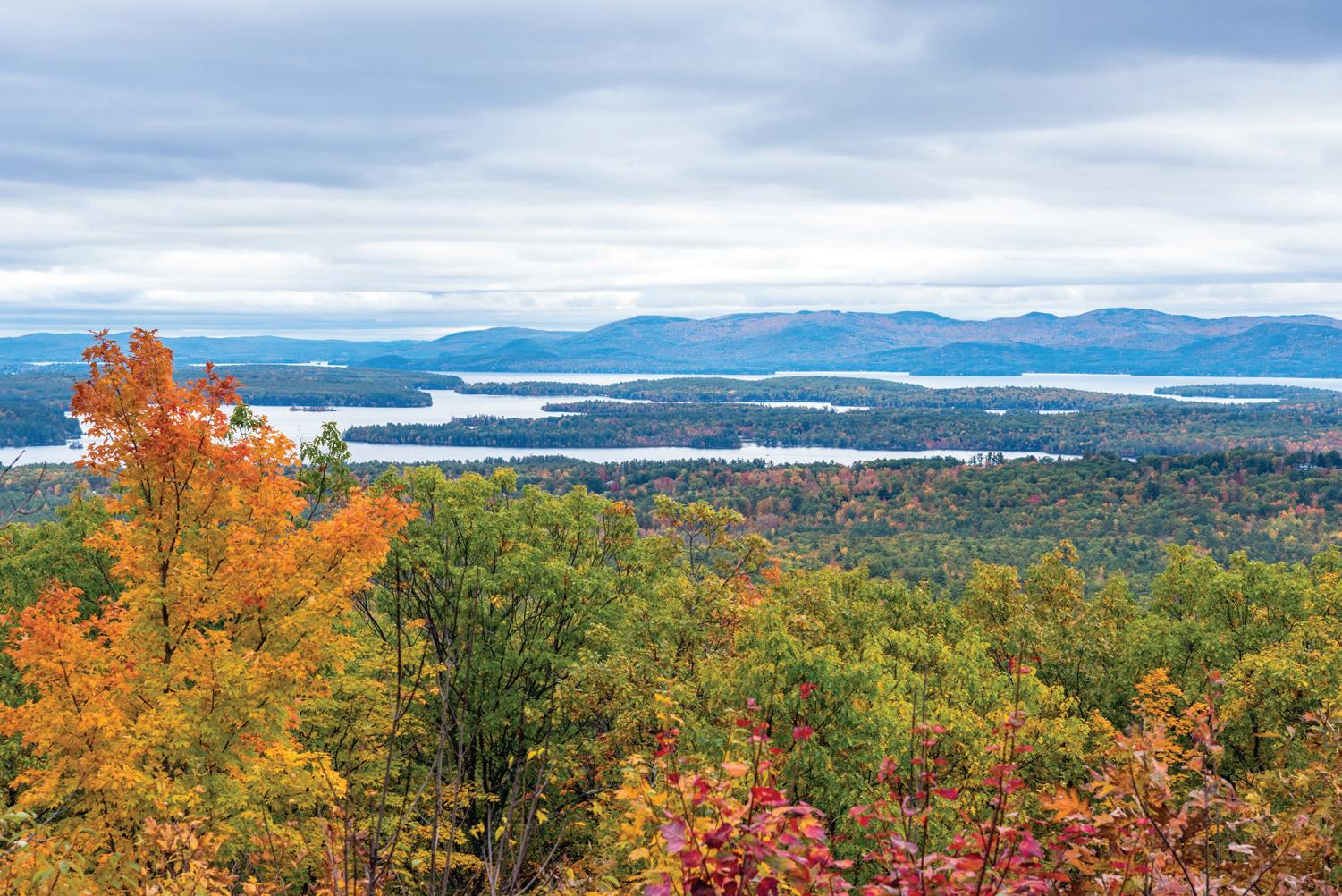
For complete race/event information, visit www.nhmarathon.com or call 604-744-2713 to register.
Live musical performances are popular in the Lakes Region and while summer has many shows, talented musicians continue to perform in the autumn and all through the year.
For some of the best music in the area, plan to attend a show(s) at Hermit Woods Winery on 72 Main Street in downtown Meredith. Concerts happen weekly, including Onwego on Sept. 19; Katie Dobbins Music and Hermit Woods Winery Songwriter Roundup on Sept. 25 (the Roundup is a monthly event); Oct. 17 featuring Los Sugar Kings – Afro Cuban Rock and Reggae,
and much more throughout the year. Visit www.hermitwoods.com or call 603-253-7968.
Head to Patrick’s Pub & Eatery at 18 Weirs Road in Gilford for great live music. Throughout each month, enjoy weekly Team Trivia; Open Mic Nights; Music Bingo and weekly live musical performances. For a complete list, visit www.patrickspub.com or call 603293-0841.
The Remick Country Doctor Museum and Farm in Tamworth is a great place to bring the entire family, and the site is at its best in the summer and fall. With many tours from which to choose, you can take a trip back in time with information on how a country doctor



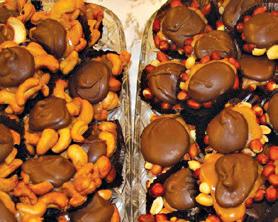





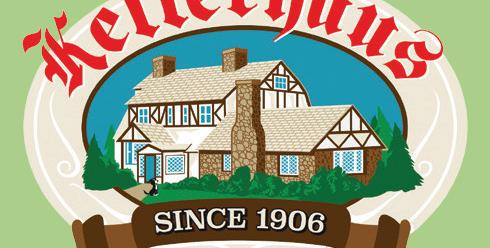





practiced medicine and ran a farm. For a unique and delicious dinner, make reservations for Table x Remick on Saturday, Sept. 21 from 5:30 – 8 p.m. The suppers offer fresh New Hampshire provisions. The dinners are popular and sell out, so reserve now. For all Remick Museum events, call 603-3237591 or visit www.remickmuseum.org Prescott Farm at 928 White Oaks Road in Laconia has great hiking trails and wonderful programs for kids, as well as adults. A Polliwogs series of programs for pre-K kids accompanied by an adult takes place on Wednesdays until late October. Other programs include Cattails: Crafting, Cordage, First Aid and More on Sept. 21; Autumn Wreath Making on Sept. 28; Fall Soups on Oct. 5; Fall Leaf Bowls on Oct. 26 and more events taking place into December. Call 603-366-5695 or visit www.prescottfarm.org for further information.
Sandwich Fair is a beloved event in the Lakes Region and beyond, and this year will take place from October 12 to 14 in Sandwich. The event is held at the height of the foliage season, which adds to the fun. The pre-fair kicks off on Friday, Oct. 11 from 4 to 9 p.m. with rides.
Things get underway on Saturday, Oct. 12 with an auto parade at 1 p.m., exhibits, food vendors, competitions, live music, and much more. The fun continues on Sunday, Oct. 13 with a grand street parade at 1 p.m. (The open • Fall Fun continued on page 4






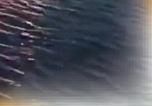









hours for the fair on Oct. 12 and 13 are 8 a.m. to 6 p.m.)
On Oct. 14, more events take place, including music, animal displays, crafts, food, and a midway. A big event on Oct. 14 is the Pickup Truck Pull at 9 a.m. and equipment skills competition at 1 p.m. Visit www.thesandwichfair. com for a complete schedule or call 603-284-7062.
Elsewhere in the Lakes Region, there are many events at the historic and beautiful Castle in the Clouds in Moultonborough through the Christmas season.
Hiking is great at the Castle property with a Bald Knob guided hike on Sept. 12 from 8 to 11 a.m. You can learn about the history of the property and the nature you will encounter along the way. From the ledge, you will get a stunning view of Lake Winnipesaukee and Lucknow Mansion. This is a moderate to difficult hike. Pre-registration for the hike is required.
On Sept. 19 from 1 to 2:30 p.m., a fascinating program will take place. Join Castle staff on a walk around the property to learn about its extensive and incredible history. You will hear about the site’s long history, from its geological activity 100 million years ago to the significance of the cellar holes, to how Tom and Olive Plant


transformed the property, up to how it is used in the present day. The tour will last approximately 90 minutes and involves walking outdoors, including slight inclines and uneven ground. Preregistration is required.
A Guided Hike of Oak Ridge will take place on Sept. 26 from 10 a.m. until noon; the hike also takes place on Oct. 17. Pre-registration is necessary to participate.
The popular Castle Car Show happens on Oct. 5 from 10 a.m. to 2 p.m. The show is a gathering of automobiles at the classic country estate. Spectators will see examples of antique cars and motorcycles dating from the turn of the 20th-century in a stunning setting. Judges will give awards in three categories: Plant Era (1914-1941), this year’s featured category (the 1960s), and Judges’ Choice.
More events happen throughout October, including a watercolor workshop, a graveyard history walking tour, pumpkin walk, guided hike and other events as well.
What could be more magical than Christmas…at a castle? Castle in the Clouds will offer Christmas at the Castle this year on November 23, 24 and 30 as well as Dec. 1, 7 and 8. A Christmas at the Castle Preview Party will be held on November 22. Take a tour of the Castle decorated to the hilt by local businesses. This year’s theme will be “Home for the Holidays” and it will transform the castle into a glittery
place of holiday magic.
During the Christmas at the Castle event, the popular Artisan Fair will be held at the Carriage House. Stop by and see handmade goods and get a jump on your holiday shopping. Call 603-4765900 or visit www.castleintheclouds. org. for further information. Castle in the Clouds is located at 455 Old Mountain Road in Moultonborough.
The Squam Lakes Natural Science Center in Holderness is open until late fall with many fun family programs. You can get up close to animals and take workshops at the Science Center; it is a great place to visit in the fall months.
If you want to see Squam Lake in all its autumn glory, plan to take a Discover Squam Cruise offered via the Science Center until mid-October. You will experience the natural beauty of
Squam Lake aboard a canopied pontoon boat and if you are lucky, you will catch sight of a loon! Call 603-9687194 or visit www.nhnature.org
Like pumpkins? Catch the glow – the popular New Hampshire Pumpkin Festival will take place in Laconia starting on Oct. 22 and culminating with a weekend of great activities on Oct. 25 and 26 in downtown Laconia. Allthings-pumpkin will be the focus of the event, with happenings all over the downtown. This year, events will also take place at Weirs Beach.
There will be, among many events, music, costume parades, the Runaway Pumpkin 10K and 5K Run/Walk at Opechee Park on North Main Street in Laconia and of course, pumpkins lit to illuminate the night during the event. Visit www.nhpumpkinfestival.com for information.
On Wednesday, September 11, 2024, from 4:30 p.m. to 5:15 p.m., American Legion Post 18, in partnership with the Wright Museum, will host its monthly Veterans Muster at the Wright Museum, located at 77 Center Street, Wolfeboro, NH. This month’s meeting will focus on strategies for paying for college, and it is open to everyone, including veterans, students, and parents. The event will feature a presentation on American Legion scholarships and offer a range of information about educational funding options. A representative from the New Hampshire National Guard will discuss how the Guard can assist with college tuition, how vet-




erans can transition into the National Guard, and how they can receive Guard benefits without attending basic training. Additionally, a representative from the Reserve Officer Training Corps (ROTC) will provide information on ROTC scholarships. There will also be guidance on how veterans can activate their benefits to attend college.
This event is free and open to the public, with a special invitation extended to young men and women who are exploring options for funding their college education.
For more information, please contact Paul Vivian at (703) 798-8978 or email at paulhv@aol.com.





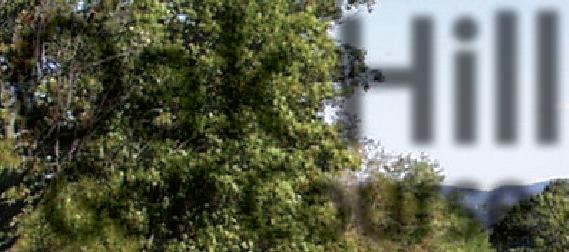


























































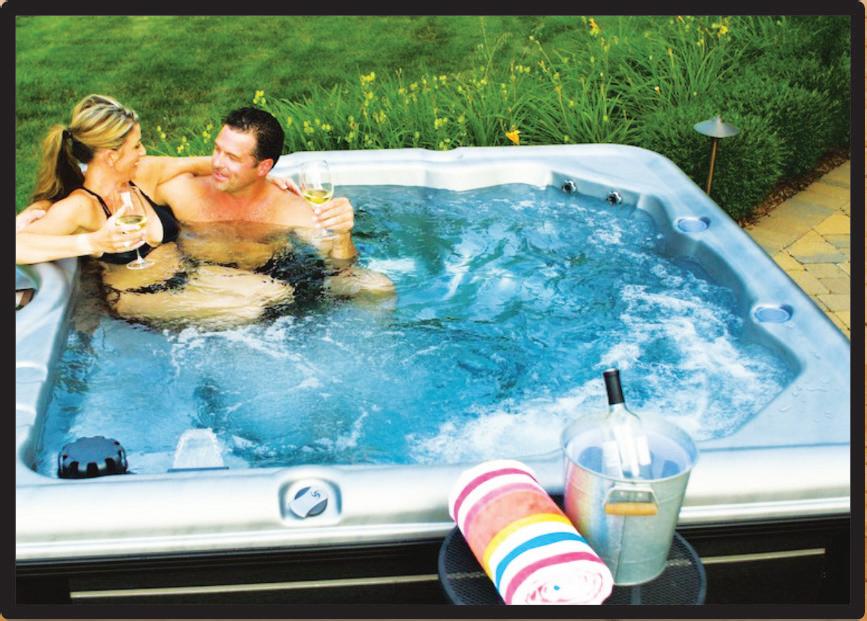


















By Chef Kelly Ross
Hello Foodie Friends. I’m back with another batch of recipes to hopefully give you some great ideas for your upcoming menu. Some of you are probably wondering what I have up my sleeve today, could it be breakfast ideas, lunch, dinner, or maybe desserts? The answer is “no” to all of them as today I will focus on some great dinner side dishes. No matter how outstanding a dinner entrée may be, sometimes it loses its luster when served with a subpar side dish or two, so today is about trying to avoid that situation. I truly believe that all five of these recipes will sound good to most of you. One is done off the grill since it is still grilling season for many, and the other four are done on and in the oven. A couple of these are tater recipes and the other three are geared toward the veggie world - all in all, I think you will find most of these not your average side dishes. Before we talk veggies, let’s talk spuds. When it comes to potato chips, my favorite flavor by far is salt and vinegar. We’re going to take that mentality and put that into a delicious side dish for dinner. They are boiled first in vinegar, salt, and water, and then finished in the oven with additional flavors. You can have these finished in just under an hour and will serve 4 of you.
Salt and Vinegar Potatoes














2 lbs baby potatoes halved, preferably reds or honey gold
1 cup distilled white vinegar
1 tbsp kosher salt
2 tbsp olive oil
Freshly ground black pepper
Coarse sea salt
Chopped fresh chives
Place the potatoes in a large pot along with the white vinegar and the kosher salt. Add enough cold water to the pot to cover the potatoes by about 1 inch. Bring the water to a boil, reduce heat, and cook until just fork tender, about 15-20 minutes. Drain and pat the potatoes dry. Place the potatoes in a large bowl with the oil and toss to coat, spread the potatoes on a lined baking sheet and sprinkle with black pepper to season. Roast at 450 degrees until crispy, about 25-30 minutes. Sprinkle with coarse sea salt and chopped chives before serving. Amazing flavor in these spuds.
Next in Taterland, this one may sort of sound familiar to some of you as it is a potato casserole spin on the classic baked stuffed potato that many of us have enjoyed, and although I love those, this version is easier to make, and the flavor is quite similar and has always been a hit at family dinners. This has all the cheesiness of a twicebaked potato and all the toppings of a loaded baked potato. What could be better than that? This comforting po-


tato recipe is made with creamy sour cream, cheddar cheese, bacon, and green onions and is loaded with flavor. Take this delicious casserole to a holiday meal, or a potluck, or make it for yourself. No matter the occasion, this cheesy twice-baked potato casserole will be a hit. It’s not hard to make and you will be asked for this recipe from most of your crowd. This is perfect for any get-together. I can usually feed 6 or more with this and the overall time for it is close to two hours, although more than half of it is cooking time.
Cheesy Loaded Twice-Baked Potato Casserole
2 lbs red-skinned potatoes
1 tbsp olive oil
Kosher salt, to taste
4 or more slices of bacon, cooked and crumbled, divided ½ cup half & half
1 cup sour cream
¼ cup butter, melted and cooled
1 ½ cup shredded sharp cheddar cheese, divided
2 green onions, sliced
1 tsp chopped fresh parsley
½ tsp Kosher salt
¼ tsp black pepper, freshly ground
Preheat oven to 400 degrees. Scrub potatoes and pierce each with a knife. Place on a baking sheet lined with foil.
Toss the potatoes with olive oil and salt, and bake for 45 minutes until tender.
• ‘Cue The Grill continued on page 6


















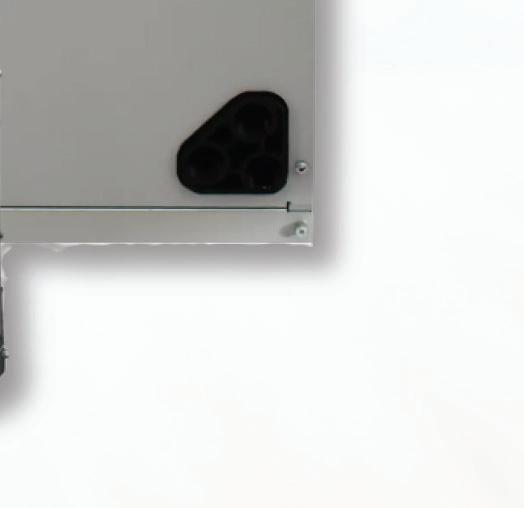





• ‘Cue The Grill continued from page5
Cook bacon until crispy, drain on paper towels. Crumble when cooled. When potatoes have cooled enough to handle, slice in half, then into half rounds about ½ inch thick. Place potatoes in a large bowl and toss with 1 cup of the cheddar cheese, half of the bacon, and half of the green onions. Butter an 8 x 8-inch baking dish. Combine the half-andhalf, sour cream, and the melted butter. Add the parsley, kosher salt, and pepper. Pour the sour cream mixture over the potatoes and toss. Using a potato masher, break down the chunks. Place the potato mixture in the baking dish, cover with foil, and bake at 350 degrees for 40 minutes. Remove foil and top with the remaining ½ cup shredded
cheese and bake for 5 minutes until the cheese has melted. Garnish the top with remaining bacon and green onions and watch that dish get passed around the dinner table very quickly.
I do love my potatoes in all respects, but personally, the next three are easily as good if not better. This first one brings









WE’LL DRILL THE WELL, RUN THE WATER LINE AND INSTALL YOUR PUMP AND PRESSURE TANK AND ADD THE FILTERS, PURIFIERS, SOFTENERS, WHATEVER YOUR NEW WATER SYSTEM NEEDS.
eggplant into the food fun, and this is the one I do off the grill. The inspiration for this recipe came from Jamaican jerk chicken as I’ve always been drawn to smoky, spicy, earthy foods. Jerk seasoning fits all those categories. The list of ingredients in this is long, mostly from the spice shelf, but if you don’t have them all, I think you’ll be just fine. The eggplant is sliced into thick “steaks” and generously brushed with your jerk marinade, which is comprised of tamari, coconut sugar, fresh ginger, garlic, lime juice, chilies, onion, and an array of spices like cinnamon, coriander, and cayenne. The result is a sauce with amazing flavor that soaks right into the eggplant before they’re grilled to perfection. This comes with a great side sauce recipe to go with it which I love, but in all honesty, this is tremendous with or without the sauce. The eggplant is smokey, hearty, spicy, healthy, and very tender. Oh yeah, the perfect side dish, or for the vegetarian crowd, a great main dish. Prep time is 20 minutes, cooking time 10 minutes or so, and as for how many it will serve, that will depend on if using as a side dish or entrée, but I usually plan on 4.
Grilled Jamaican Jerk Eggplant
For The Eggplant
1 tsp ground cinnamon
1 tbsp ground coriander
¼ tsp allspice
¼ tsp cayenne pepper
½ tsp each sea salt and black pepper
2 tbsp fresh thyme
4 cloves garlic, minced, 2 tbsp
1 tbsp fresh grated ginger
3 tbsp lime juice
¼ cup tamari or soy sauce
2-3 tbsp coconut sugar or maple syrup, plus more to taste
2 tbsp melted coconut oil
3 stalks scallions, thinly sliced
1 medium serrano or habanero pepper, thinly sliced, seeds removed
1 large eggplant, or sub 2 small-medium
For The Sauce, optional, but good ¼ cup BBQ sauce
1 tbsp lime juice
1 tbsp grape seed or olive oil
1 tbsp coconut sugar or maple syrup
1 tsp fresh grated ginger
1 pinch each sea salt and black pepper
1 stalk scallion, thinly sliced
1 pinch cayenne pepper, optional
For the eggplant, in a small mixing bowl, combine all the ingredients except the eggplant until well blended. Taste and adjust flavor as needed, adding more tamari for saltiness, lime juice for acidity, fresh herbs for earthy flavor, coconut sugar for sweetness, pepper for heat, or garlic for bite/ zing. Slice eggplant lengthwise into ½-inch-thick steaks and generously brush both sides with the marinade. Heat a grill to medium-high heat and lightly oil to keep the eggplant from sticking. Once hot, add eggplant and grill on both sides until golden brown and grill marks are present, about 3-5 minutes on each side. In the meantime, prepare sauce, if using, by adding all ingredients to a small bowl and whisking to combine. Taste and adjust flavor as needed, adding more lime for acidity, coconut sugar for sweetness, cayenne for heat, or salt for saltiness. Serve grilled eggplant as is if serving as a side, or over rice maybe as a main dish and with sauce if using, and gar-
• ‘Cue The Grill continued on page 8










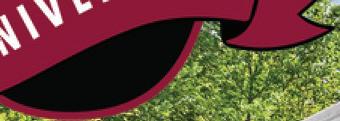


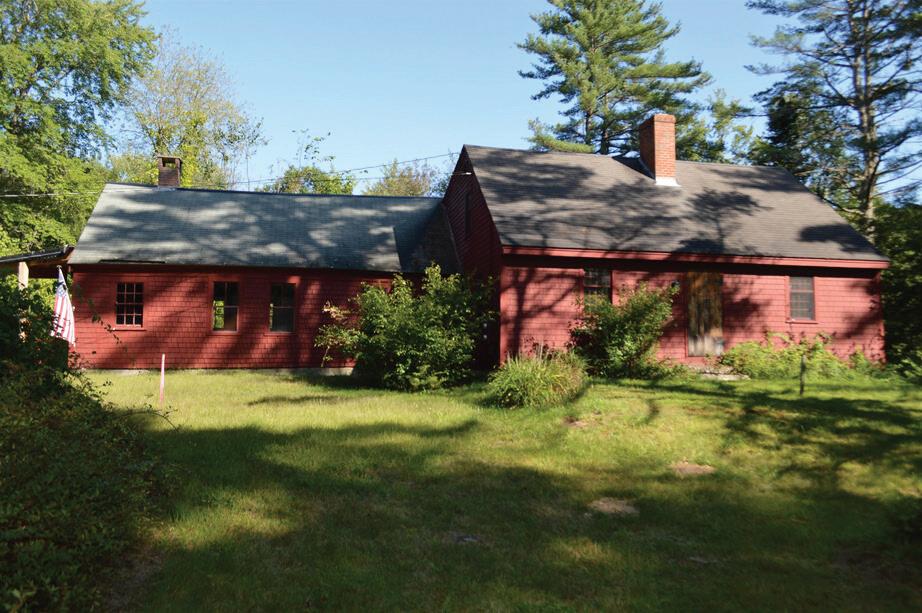





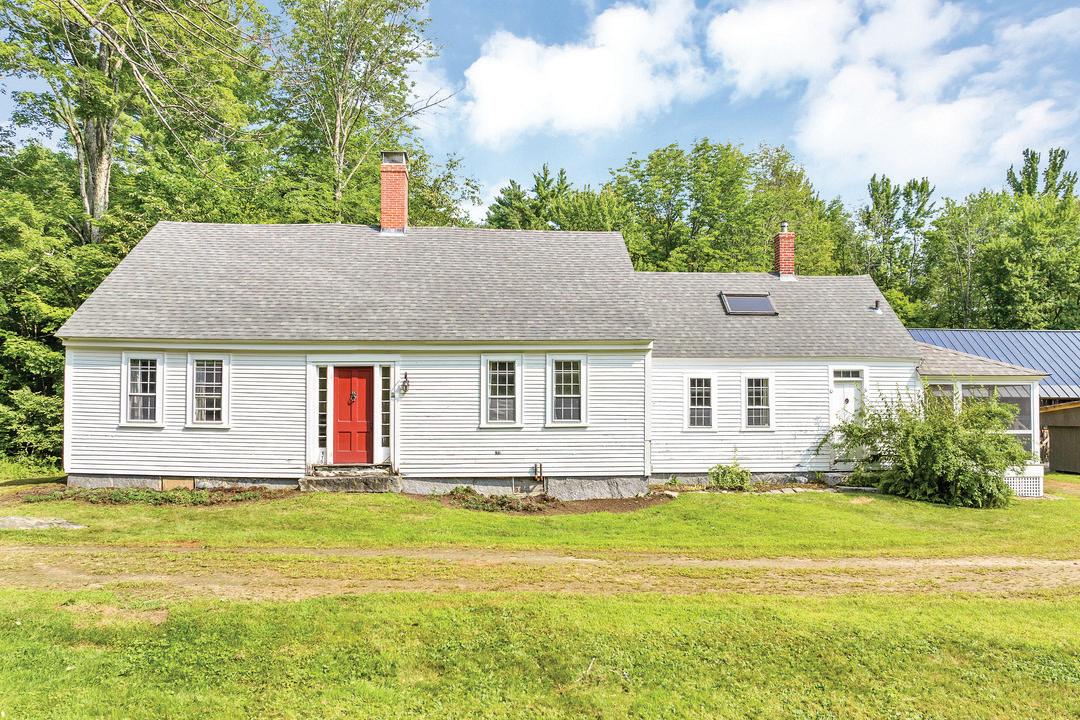

nish with fresh herbs, such as parsley or green onion. Best when served right away, and you’ll love it.
One of my favorite veggies known to mankind is not what many are likely thinking but give me onions all day long. I have never met an onion dish that I did not love. This onion dish is done casserole style and if you like onion rings like most of us, I’m willing to take bets that you will love these all the more. This takes slices of Vidalia onions, topping them with butter, seasonings, and cheeses, and baked to the point I could eat a whole casserole dish of these, although my innards may not approve of an onion overdose. I served this at Thanksgiving last year and shared this recipe with 8 people. That should be all you need to know. Prep and cooking time is about an hour, about 40 minutes in the oven. This should feed 8 or you as a side dish. So Good!
Baked Onion Au Gratin
3-4 Vidalia sweet onions
4 tbsp unsalted butter
1 tsp salt, give or take depending on preference
1 tsp garlic powder
½ tsp oregano
1 cup Italian blend cheese, finely shredded
1 cup cheddar cheese, finely shredded
½ cup Parmesan cheese, finely shredded
Preheat your oven to 350 degrees. Coat a 9×13-inch baking dish with non-


stick cooking spray. Clean and peel the Vidalia sweet onions. Slice them into rounds approximately ¼ inch thick and do not separate the rounds into individual onion rings. Spread the onion evenly across the base of the prepared baking dish. Season the onion rings with salt, garlic powder, and oregano. Cut the butter into roughly eight even portions or pats. Distribute these butter pats evenly across the seasoned onion rings in the baking dish. Sprinkle the Italian blend cheese and cheddar cheese evenly over the onion rings.










Finish with a final topping of shredded Parmesan cheese. Place the baking dish into the preheated oven. Bake for 35-40 minutes until the cheese is browned and bubbling. Serve right up and enjoy!
Lastly today, this is the ultimate veggie bake as this includes a great potpourri of vegetables chock full of crunch, flavors, and cheesy goodness. This has potatoes, zucchini, onions, peppers, mushrooms as far as veggies, and then some great extras like burgundy wine, BBQ sauce, and other great flavors, and oh yeah, the cheese. This is truly the holy grail of side dishes. Prep will take as much as 15-20 minutes and the cooking process is about
double that. This will feed as many as a dozen, so cut back if needed depending on your crowd.
The Ultimate Veggie Cheese Bake
¼ cup vegetable oil
2 medium-sized baking potatoes, peeled and cubed
1 medium-sized zucchini, cut into ¼ inch slices, about 4 cups
1 large onion, quartered and cut into ½ inch pieces
2 medium-sized green bell peppers, cut into ½ inch slices
½ lb mushrooms, cut into ½ inch slices, about 3 ½ cups
3 garlic cloves, minced
16 oz shredded mozzarella cheese for topping
1 ½ cups mild barbecue sauce
½ cup Burgundy wine
½ cup water
1 tsp dried thyme
¼ tsp black pepper
In a large skillet, heat oil until moderately hot, sauté potatoes, zucchini, onion, green peppers, mushrooms, and garlic for 3-5 minutes, and set aside. In a large saucepan, combine the remaining ingredients, except mozzarella cheese, and simmer for 10 minutes. Add sauteed vegetables to the sauce and simmer for another 10 minutes, keeping warm. Preheat oven to 350 degrees. Spoon vegetable/sauce mixture into a 9 x13-inch glass baking dish and sprinkle with mozzarella cheese. Bake for 15-20 minutes or until cheese is bubbly and lightly golden.
Sometimes a side dish can outshine the main course, and these do have that potential, although as great as these are, I hope your main dish does most of the work. Until next time, keep your taste buds smiling and if you have any questions or feedback, please reach out at fenwaysox10@gmail.com





Spiny water fleas, an invasive microscopic animal, have increased in number across Lake Winnipesaukee this season, based on feedback from anglers who report fouling of fishing lines with dozens of these animals. The spiny water flea is not harmful to humans but can be a nuisance to anglers when it accumulates on fishing lines. Boaters and other on-water recreation enthusiasts play an important role in stopping the spread of invasive aquatic species.
The New Hampshire Department of Environmental Services (NHDES) will conduct formal surveys in fall 2024, but early indications are that densities of the invasive plankton have increased since its discovery in fall 2023 by state biologists.
State biologists warn transient boaters and fishermen to always clean, drain, and dry their recreational gear between waterbodies, especially after being in Lake Winnipesaukee, as well as the two downstream lakes, Lake Opechee and Lake Winnisquam. All fishing gear, especially the fishing line, should be wiped down and left to dry for at least 24-48 hours before being used in another waterbody. These organisms spread by moving with tran-
sient boats, fishing gear, and other equipment that comes in contact with the infected water.
The spiny water flea, a type of zooplankton, is native to Europe and Asia. They were first introduced to the United States Great Lakes in the 1980s via contaminated cargo ship ballast water. Other Northeast locations of spiny water flea infestation include Lake Champlain in Vermont, Lake George, and a few other waterbodies in New York. The tiny animal was likely first introduced by a transient boater who visited a waterbody with an existing infestation, and then transported live organisms or eggs

fouling fishing line used in Lake Winnipesaukee. (Photo courtesy of D. Kretchmer)
to Lake Winnipesaukee on recreational gear or in a water-containing structure like a live well or bilge.
The spiny water flea also has negative impacts on the aquatic food web by shifting plankton communities (microscopic plants and animals), resulting in reduced gamefish population, especially trout and salmon.
There are no treatments available to control this species once it is established. The only management option is preventing introduction into uninfected waterbodies. Boaters and other on-water recreation enthusiasts play an important role in the spread of aquatic invasive species, and should practice
good lake stewardship activities, specifically:
CLEAN off any plants, animals, and algae found on boats, trailers, and other recreational gear, and dispose of it away from a waterbody. This includes anything attached to the fishing line, tackle nets, and other equipment used in fishing activities. At a minimum, rinsing of gear or pressure washing gear with high pressure, higher temperature water is ideal.
DRAIN your boat, bait buckets, bilges, live wells, and other waterholding equipment away from the waterbody, leaving all drains in the open position during transport.
DRY anything that comes into contact with the water, preferably for 2448 hours.
Please help to prevent the spread of other waterbodies in New Hampshire. State biologists will be monitoring spiny water flea populations in September as part of a routine sampling event.
For more information or to report a potential new infestation, please contact Amy Smagula (NHDES) at Amy.P.Smagula@des.nh.gov or 603271-2248.
Everyone is a poet when it comes to their own experience.
On Saturday, September 21, from 10 a.m. to noon, join the Chocorua Lake Conservancy for a Mindfulness and Nature Writing Walk at the CLC Scott Reserve and The Nature Conservancy (TNC) Bolles Reserve in Chocorua.

The event will be led by Ed Parsons, who has spent 40 years writing about the mountains surrounding us. Participants will walk to Heron Pond, soaking in nature along the way, then pause at the pond to write about their experience. The session will conclude with an opportunity to share writings with
the group. No experience is necessary!
The CLC Scott Reserve and The Nature Conservancy Bolles Reserve are areas of natural beauty and diverse habitats north of Chocorua Lake. These reserves feature a mix of forest types and varied terrain, including small vernal pools, wooded wetlands, and snaking eskers. Amid these wonders lies Heron Pond, also known as Lonely Lake, a beautiful kettle hole.
Please dress appropriately for the weather, wear sturdy walking shoes, and bring a notebook or paper, a writing implement, water, and a snack. Be prepared for sun, bugs, and ticks; you might also like to bring a blanket or pad to sit on. The event is free for CLC members and children; there is a suggested donation of $10 for non-members. Please register in advance at chocorualake.org/events to receive any updates or changes to the schedule. In case of rain, the event will be held on Sunday, September 22.
Presenter Ed Parsons has found both a refuge in nature and a means of communicating with the world. He writes weekly about the mountains and can be found outdoors most days. Parsons grew up on the North Shore of Boston on a dead-end street next to Wenham







Lake, where he began his practice of walking and being in nature. He worked for the Appalachian Mountain Club Hut System for five years, moved to the valley, and has written about hiking in local newspapers for 40 years. Parsons has lived in Tamworth for a decade and has led many people outdoors, discovering nature in our backyards on the edge of the White Mountains.
This event is part of a series of Chocorua Lake Conservancy programs held throughout the year to encourage people of all ages to enjoy Chocorua Lake and the trails and woods that surround it and to learn more about the natural world we inhabit. Visit www.chocorualake.org for more information and follow us on Facebook and Instagram.
The Chocorua Lake Conservancy (CLC) is a nonprofit land trust founded in 1968 to protect the scenic and natural resources of the Chocorua Lake Basin and surrounding area. CLC is committed to providing visitors and residents with convenient and attractive public access to Chocorua Lake and trails on nearby conservation lands. For more information, including how to get involved, please visit www.chocorualake.org.




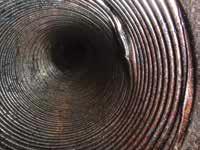
By Kathi Caldwell-Hopper
Thomas Plant was determined to live in a grand mountaintop home. Not just any home would do, but rather he wanted a mansion with spectacular, unrivaled views of Lake Winnipesaukee spread far below.
His mansion would be unique, with chiseled stone, features such as a secret miniature room, ornate interior woodwork, and every modern convenience for his staff, to name but a few of the features that would set the place apart.
Plant and his wife Olive are local legends, as is their grand Moultonborough estate today known as Castle in the Clouds. The couple built their home from 1913 to 1914 and lived there in the early to mid-1900s. The beautiful and unusual place was called Lucknow, the name Plant gave to their mansion. Building and tending to the vast estate was onerous work and required quite a few people in the heyday of the Plant’s residence.
As mansion go, Lucknow was not a particularly massive place, but it was truly unique and required extra care due to its mountaintop location. The winds howled in winter and extreme weather was the norm. Added to this, the property was vast, with a carriage house, servant’s quarters, riding and hiking trails, cars to be kept in topnotch condition, a large farm, and a golf course. The number of employees it took to build and care for the Lucknow property was extensive, with each person having a particular skill set

to do their job.
The laborers that once ran today’s Castle in the Clouds (formerly Lucknow) are the subject of a fascinating exhibit in the Carriage House gallery on the property. The Castle estate is located in Moultonborough and visitors can tour Plant’s former home, and the beautiful grounds and have a meal before or after seeing it all.
The exhibit, titled “Lucknow’s Laborers: The People Who Built and Cared for Tom Plant’s Estate” required




extensive research. That job fell mostly to Robin Sherman, Castle Curator and Director of Preservation.
Putting the exhibit together was not a simple project, but one Sherman relished. “It’s a topic I’m interested in (the employees that worked at the Castle). There hasn’t been much information on the former staff so I spent a lot of time trying to discover more about the people who once worked for the Plants. I started working on the exhibit two years ago last summer.”
There were some photographs of the structures under construction but not many of the staff. This meant detective work to find out more through old newspaper clippings, draft registration cards, and valuable input from relatives. “I just love old research,” Sherman adds.
• Castle continued on page 12





Through searching, Sherman learned that many of Plant’s employees were from Europe and made their way to the United States as immigrants. But how did these men and women find their way to remote Moultonborough to work at Lucknow? Sherman surmises that Plant may have used help-wanted newspaper ads or an employment service or relied on word-of-mouth from one local family or neighbor to another. (Work would have been limited in the area in the early 1900s and pursuing a job far away was quite difficult. Thus, a chance to work at the nearby estate may have been welcomed.)
The exhibit is chock-full of fascinating old photographs and accompanying information about the employees and their various jobs in Lucknow. We learn that there were up to 30 staff members in the Plant’s early years of residence at the estate. There were house servants, gardeners, stable hands, farm laborers, a chauffeur, and other workers.
As times changed, the Plants employed fewer people: six house servants, a houseman/gardener, a combination chauffeur/horseman, and a man to care for cows to furnish milk and cream to the main house. The years ate away at Thomas Plant’s fortune and by the 1930s, he employed just one livein servant, a groundskeeper, and a farm manager.
Before the Plants lived at their luxurious estate, skilled workers constructed the home from 1913 to 1914. Laborers cut through the forests and made carriage roads and an earthen dam. Artisans such as stonecutters completed the mansion and the gatehouse lodges and stables. The men were hard workers and it is said they completed their construction work in a mere year and a half.
The exhibit has wonderful old photographs of the workers and the property.

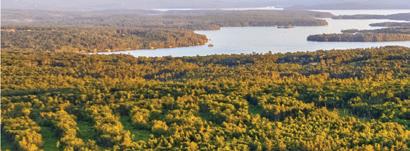
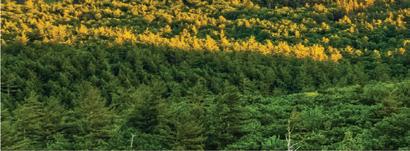
The viewer gets not only a glimpse at the former servants and workers but also information researched by Sherman on the background of many of Plant’s employees. Some were locals, glad of a steady job and a chance to see the mansion up close. Others lived in far-away places such as Boston and other New England areas before they made their way to Moultonborough.
One such man, Arthur Landry, was born and grew up in Boston, the youngest of three children. The family fell on hard times after the man of the house died leaving his wife to care for the children. Arthur trained as a carpenter at a young age and made hardwood floors during his career. He was a perfect choice to lay the wooden floors at the mansion and he greatly enjoyed the amenities of the great estate’s woods and outdoor areas when not at his job.
He was not alone in his love of the Lucknow property, and some photos show us construction workers posing on a bathhouse dock, circa 1913 to 1914. They are dressed in old-timey bathing suits, ready to take a dip in the lake after a hard day’s work.
A Norwegian transplant was Jacob Nelson, just 10 years old when he came with his family to the United States. While growing up outside Boston, Jacob learned the carpentry trade. After moving to the area, he worked on a local farm but eventually found a job at Lucknow where he helped finish the mansion’s interiors, and is thought to have hung the many doors throughout.
Immigrant and laborer Luigi Paolucci came from Italy and worked as a skilled joiner, a person who constructs a building’s wooden interiors. It was his talents, among others, that crafted the beautiful wooden touches we see within the castle to this day.
The huge farm on the estate required a skilled farmer and Plant was lucky to employ Lewis Frye from Sandwich, New Hampshire to take that job. In about 1910, Frye worked for Plant on the farm and also was a teamster when





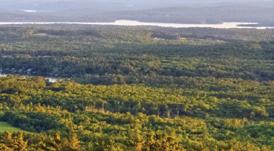
Plant’s golf course, Bald Peak, was built sometime later.
Frye’s son, Clarence, also worked for Plant and started married life while living at the farm. He was the farm manager for many years.
The viewer is given a look at the vast farm as well as photos and stories of the laborers at Lucknow. Early on, Plant tried his hand at raising livestock but soon realized he needed help. Thus, he hired qualified farm workers and the system worked well, supplying the big house with fresh meats, vegetables, and dairy products for years.
Many visitors want to know specifically about the servants who worked in the house because it was these “Upstairs/Downstairs” people who got an up-close look at the Plants, their many guests, and the inner workings of the grand estate. The viewer won’t be disappointed because there are photos and stories of former housekeepers and maids in this exhibit.
One woman who could have been close to the Plants was Martina Malmquist, originally from Sweden. She was but 21 years old when she took the S. S. Cephalonia to Boston. She eventually made her way to Lucknow in 1929 where she worked as a housekeeper. What she might have been privy to as housekeeper for the Plants would be fascinating to know, but suffice it to say she was the only house servant living at Lucknow in 1930. She tended to the house, acted as cook, and also may have supervised a few maids who did not live on site. It was hard work for a woman who was 61 years old when she took the job. What would her life have been like living near Tom and Olive at a time when things were unraveling financially for the couple? Was there sadness in the house, the couple knowing they could not afford to stay forever in their glorious estate? We may never know, but Martina moved on by 1935.
The exhibit is broken down into the various jobs each laborer would have
had, from maids to construction workers, farm hands, to those who drove Plant (Olive is said to have preferred driving herself) to those who tended the horses. We get a deeper look at the many people who worked for the Plants and their jobs at Lucknow.
Sherman, when asked if she came across any information on what the Plants were like as employees says she learned from a few sources that the former employees had fond memories of their time at the estate.
While the social division between staff and owners was clear, lines may have blurred more frequently at a place like Lucknow. The estate was remote and the Plants loved the outdoors and made use of the entire property. They would have encountered their staff in the gardens and on the farm, and also in their house each day. Surely they talked with and maybe even socialized to some extent with the people who worked for them.
Sherman and the collections committee at the Castle worked hard on the exhibit, gleaning knowledge and artifacts from many sources. (She adds that if anyone has information or old photos of a relative who once worked at Lucknow, she would welcome their insights.)
The exhibit will remain up through the rest of the season at Castle in the Clouds and next year as well. Already, Sherman is working on the next exhibit to cover the overall history of the Castle. It should be another interesting look back to a time of elegance, wealth, and the construction of the amazing home high atop a mountain that visitors clamor to see to this day.
Visit www.caslteintheclouds.org. or call 603-476-5900 for details. Castle in the Clouds is located at 455 Old Mountain Road, Moultonborough.



• Guided Hikes & Walking Tours
• Sensory-Friendly Saturday
• Lucknow Garden Tours
• Equine Programs
• Teacher Cocktail Night and Much More!
• 9:30am Daily
• May 25 - Oct 20
• Offered once daily with advance ticket




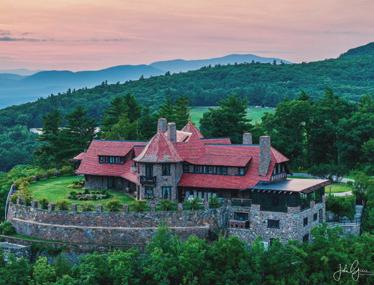



to October 31:




Some illustrious but little-known local citizens from our past will be at this year’s Historic Figures Tea, sponsored by the Wolfeboro Historical Society. This popular event takes place Sunday, September 15, from 2:00 to 4:30 at the Clark Museum Barn.
Many of our guests played a significant role in our country’s history. Dorothy “Dot” Braden worked at Arlington Hall during World War II, as part of the Signals Intelligence Service, similar to Bletchley Park. Chester Merrow served as New Hampshire Congressman from 1943 to 1963. He was an author, teacher, lecturer, and beloved grandfather as well. Harriett Patience Dana volunteered as a nurse in the Civil War. She was a driving force in getting soldiers’ remains back to their families where they


could be interred with dignity. Author and poet Celia Thaxter, known as the “lighthouse girl”, lived on the Isle of Shoals in the late 19th century, drawing inspiration and solace from its bleak and beautiful environs.
Although many of our Historic Figures are from New Hampshire, revered artist Mary Cassatt, known for her tender depictions of mothers and their children, spent much of her life in Paris. Born in Allegheny City, Pennsylvania, she moved to France to pursue her career in the company of other Impressionist artists.
Tickets are $25, and $20 for Wolfeboro Historical Society members. Call 603-569-1923 or 603-569-4997 for reservations. You may pay at the door. Hot and cold tea and refreshments will be served at intermission.
On Tuesday, September 17, the Wright Museum will welcome author Howard Mansfield. This is the fourteenth program of the Wright Museum’s 2024 Education Series. Growing up, World War II was omnipresent and hidden. This was also true of his father’s time in the Air Force. Like most of his generation, it was a rule not to talk about what he’d experienced in war. “You’re not getting any war stories from me,” he’d say.

is $5 for members and $10 for non-members. Reservations are strongly encouraged and can be made online at wrightmuseum.org/lecture-series or by calling 603-569-1212. Books may be purchased in advance at the Country Bookseller or the lecture at the Museum.
Doors open at 6 p.m., and the program begins at 7 p.m. in the Wright Museum’s DuQuoin Education Center, 77 Center Street in Wolfeboro. Admission

The region’s leading resource for educators and learners of all ages on World War II, the Wright Museum features more than 14,000 items in its collection that are representative of both the home front and battlefield. For more information about the 2024 Lecture Series or museum, visit wrightmuseum.org.
















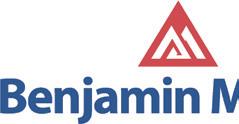























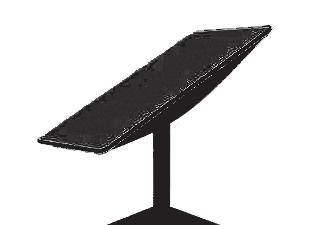









































Please
Through Sept. 14, Of Baskets and Borders, exhibit at Museum of the White Mountains, 34 Highland St., Plymouth, www.plymouth.edu/mwm/, 603-535-3210.
Through Sept. 15, Lee Mills Steamboat Meet, Moultonborough, date tentative, call 603-476-2224.
Sept. 9, Birds & Bagels, 8:30 – 11:30 a.m., meet at Laconia Public Library parking lot, 695 N. Main St., Laconia, walk the WOW trail with the group looking for birds enjoy coffee and bagels back at the library following the walk, pre-registration required: 603524-4775.
Sept. 9, Fall Crafting for Kids - Scarecrow, 3 – 4 p.m., ages 5 – 9, Moultonboro Public Library, 4 Holland St., Moultonboro, pre-register: 603-476-8895.
Sept. 9-13, Nature Station Grab Bag: Exploring Fungi!, 9 a.m. – 4 p.m., stop by Newfound Lake Region Assoc. office at 10 N. Main St. (above TD Bank), Bristol, for a free Nature Station Grab Bag, info.: www.newfoundlake.org., 603-744-8689.
Sept. 10, Friends Crafts with Linda: Fabric Pumpkins, 10 a.m. – noon, Moultonboro Public Library, 4 Holland St., Moultonboro, pre-register: 603-476-8895.
Sept. 10, Lecture Series: David Chrisinger – The Soldiers Truth: Ernie Pyle and the Story of WWII, 7 p.m., Wright Museum of WWII, 77 Center St., Wolfeboro, 603-5691212, www.wrightmuseum.org
Sept. 10, Unlikely Animals: Author Talk with Annie Hartnett, 6 – 7 p.m., Moultonborough Public Library, 4 Holland St., Moultonborough, pre-register: 603-476-8895, www.moultonboroughlibrary.org
Sept. 10 & 14, Nature Station, 10 a.m. – noon, Grey Rocks Conservation Area, 178 N Shore Rd., free, open to all, Hebron, 603-744-8689, www.newfoundlake.org.
Sept. 11, Discoveries in Bird Migration, 6 – 7 p.m., Moultonborough Public Library, 4 Holland St., Moultonborough, pre-register: 603-476-8895, www.moultonboroughlibrary.org
Sept. 11, Loft Listening Room Experience featuring Eli Lev, 6 p.m., Hermit Woods Winery & Eatery, 72 Main St., Meredith, ticket reservations a must: 603-253-7968, www.hermitwoods.com
Sept. 11, Polliwogs, 10 – 11:30 a.m., Prescott Farm Environmental Education Center, 928 White Oaks Road, Laconia, www.prescottfarm.org. Call ahead for event information and to inquire if program pre-registration is necessary: 603-366-5695.
Sept. 11, Skywatch & Talk with Ed Ting, 6 – 7:30 p.m., Laconia Public Library, 695 Main St., Laconia, 603-524-4775, https://www.laconianh.gov/1000/Library
Sept. 12, Bigfoot Experience: Shadow of Big Red Eye, 6 – 7:30 p.m., Laconia Public Library, 695 Main St., Laconia, 603-524-4775, https://www.laconianh.gov/1000/Library
Sept. 12, Guided Hike: Bald Knob via Cutoff, 9 – 11 a.m., Castle in the Clouds, Rte. 171, Moultonborough, 603-476-5900, www.castleintheclouds.org.
Sept. 12, Heather Pierson and the Potboilers, 7 p.m., Majestic Café, jazz, blues and more, 34 Main St., Conway, 603-447-4737, mountaintopmusic.org.
Sept. 12, Story Hour at Moultonborough Public Library, 11 a.m. – noon, NH Boat Museum, Moultonborough Campus, 130 Whittier Highway, Moultonborough, info.: 603-569-4554, www.nhbm.org
Sept. 13, Club Sandwich with John Davidson, 7 p.m., 12 Main St., Center Sandwich, admission/info: https://www.johndavidson.com/weekendshows
Sept. 13, Comedian Bob Marley, 6:30 p.m., Flying Monkey Movie & Performance Center, 39 Main St., Plymouth, tickets/info: www.flyingmonkeynh.com, 603-536-2551.
Sept. 13, Hops and Hulls Lecture Series, 7 - 9 p.m., guest speaker Jim Pocock, NH Boat Museum, Moultonborough Campus, 130 Whittier Highway, Moultonborough, info.: 603-569-4554, www.nhbm.org
Sept. 13, Kanin Wren’s Taylor Swift Experience, 8 p.m., Rochester Opera House, 31 Wakefield St., Rochester, 603-335-1992, www.rochesteroperahouse.com.
Sept. 13-14, Reach the Beach New Hampshire Relay, Weirs Beach, info.: www.weirsbeach.com.
Sept. 14, Ashland Town Wide Yard Sale, 9 a.m. – 1 p.m., rain or shine, public and private locations around town, 603-968-7716, davidruell@gmail.com
Sept. 14, Canterbury Shaker Village Artisan Market, 10 a.m., free admission, handcrafted arts, music, Canterbury Shaker Village, Canterbury, 603-783-9511, www.shakers.org
Sept. 14, Chicklet Basket with Lynn Goldberg, 10 a.m. – 3 p.m., League of NH Craftsmen - Meredith Fine Craft Gallery, 279 Daniel Webster Highway, Meredith, pre-registration: 603-279-7920, sign up by Sept. 9, http://meredith.nhcrafts.org/classes/
Sept. 14, Basket Making Demonstration with Annette Nolett, 1 – 3 p.m., free, Museum of the White Mountains, 34 Highland St., Plymouth, www.plymouth.edu/mwm/, 603-535-3210.
Sept. 14, Start Making Sense: A Tribute to Talking Heads, 8 p.m., Rochester Opera House, 31 Wakefield St., Rochester, 603-335-1992, www.rochesteroperahouse.com.
Sept. 14, Summer Music Series with John Irish, 3 – 6 p.m., Gunstock Barrel Bar and Grille, 719 Cherry Valley Rd., Rt. 11A, Gilford, 603-293-4341, www.gunstock.com.
Sept. 15, Historic Figures Tea, 2 - 4 p.m., Clark Museum Barn, 233 South Main St., Wolfeboro, www.wolfeborohistoricalsociety.org


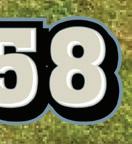

Sept. 15, Touch a Truck, 11 a.m. – 1 p.m., The Children’s Center, at The Nick Recreation Park, 10 Trotting Track Rd., Wolfeboro, 603-569-1027, www.thechildrenscenternh.org.


Sept. 16, Roller Skating Night, 5 – 7 p.m., Ossipee Town Hall, free skating format, bring your own skates, 55 Main St., Center Ossipee, waver/info.: 603-539-2008.
Sept. 17, Craft & Chat: Dorset Buttons, 5- 6:30 p.m., Moultonboro Public Library, 4 Holland St., Moultonboro, pre-register: 603-476-8895.
Sept. 17, Lecture Series: Howard Manfield – I Will Tell no War Stories : What Our Fathers left unsaid about WWII, 7 p.m., Wright Museum of WWII, 77 Center St., Wolfeboro, 603-569-1212, www.wrightmuseum.org
Sept. 17, Tech Workshop – Phoneography, 2 – 3:30 p.m., Moultonboro Public Library, 4 Holland St., Moultonboro, pre-register: 603-476-8895.
Sept. 18, Newfound Science Pub: Bird Conservation, 5 - 7 p.m., chat by Chris Martin, raptor specialist at NH Audubon and John Cooley, senior biologist at Loon Preservation Committee, held at Newfound Lake Inn, 1030 Mayhew Turnpike, Bridgewater, by Newfound Lake Region Assoc., pre-register: www.newfoundlake.org., 603-744-8689.
Sept. 18, Polliwogs, 10 – 11:30 a.m., Prescott Farm Environmental Education Center, 928 White Oaks Road, Laconia, www.prescottfarm.org. Call ahead for event information and to inquire if program pre-registration is necessary: 603-366-5695.
Sept. 18, Saturn & the Night Sky Through a Telescope, 7:30 - 8:30 p.m., multi-generational program, Prescott Farm Environmental Education Center, 928 White Oaks Road, Laconia, www.prescottfarm.org. Call ahead for event information and to inquire if program pre-registration is necessary: 603-366-5695.
Sept. 18, Tech Workshop – Phoneography, 1 - 2:30 p.m., Moultonboro Public Library, 4 Holland St., Moultonboro, pre-register: 603-476-8895.
Sept. 19, Cybersecurity for the Public, 6 - 7:30 p.m., Moultonboro Public Library, 4 Holland St., Moultonboro, pre-register: 603-476-8895.
Sept. 19, Fall Crafting for Kids – Apple Pie & Playdough, 3 – 4:15 p.m., Moultonboro Public Library, 4 Holland St., Moultonboro, pre-register: 603-476-8895.
Sept. 19, Onwego, 6 p.m., Hermit Woods Winery & Eatery, 72 Main St., Meredith, ticket reservations: 603-253-7968, www.hermitwoods.com
Sept. 19-Oct. 17, Rug Hooking for Novice & Beginners with Pam Bartlett, 10 a.m.
– noon or 6 – 8 p.m., must pre-register by 9/16, League of NH Craftsmen Meredith Fine Craft Gallery, 279 Daniel Webster Highway, Meredith, 603-279-7920.
Sept. 20, Art in the Community: Lakes Region Art Association, 3 – 4 p.m., art reception with refreshments, two installments (9/20 & 10/18), Laconia Public Library, 695 Main St., Laconia, 603-524-4775.
Sept. 20, Damn the Torpedoes, A Live Tom Petty Concert Experience, 7:30 p.m., Flying Monkey Movie & Performance Center , 39 Main St., Plymouth, tickets/info: www. flyingmonkeynh.com, 603-536-2551.
Sept. 20: Guided Exploration: Plymouth Mountain, 9 a.m. – 12:30 p.m., free, open to all, by Newfound Lake Region Assoc., pre-registration required: 603-744-8689, www. newfoundlake.org.
Sept. 20, Searching for Big Foot, 6:30 – 7:30 p.m., Moultonboro Public Library, 4 Holland St., Moultonboro, pre-register: 603-476-8895.
Sept. 20, The Sixties Show, 8 p.m., Colonial Theatre, 609 Main St., Laconia, 800-6578774, www.coloniallaconia.com.
Sept. 20, Tim Sample, 8 p.m., Rochester Opera House, 31 Wakefield St., Rochester, 603-335-1992, www.rochesteroperahouse.com.
Sept. 20, Winni Chase Regatta, 8:30 – 10:30 a.m., Pinckney Boathouse, Brewster Academy, 80 Academy Drive, Wolfeboro, multi-school rowing regatta, open to public, 603-569-7198, www.brewsteracademywinni-chase.com
Sept. 20-21, Dragon Boat Festival, Weirs Beach, info: www.weirsbeach.com
Sept. 21, Almost Queen: A Tribute to Queen, 8 p.m., Colonial Theatre, 609 Main St., Laconia, 800-657-8774, www.coloniallaconia.com.
Sept. 21, Cattails: Crafting, Cordage, First Aid & More, 10 a.m. – 1 p.m., age 12 & up, Prescott Farm Environmental Education Center, 928 White Oaks Road, Laconia, www.prescottfarm.org. Call ahead for event information and to inquire if program pre-registration is necessary: 603-366-5695.
Sept. 21, Danny Klein’s Full House, 8 p.m., Rochester Opera House, 31 Wakefield St., Rochester, 603-335-1992, www.rochesteroperahouse.com.
Sept. 21, Dueling Pianos, 7:30 p.m., at Franklin Lodge of Elks, 125 South Main St., Franklin, presented by Franklin Opera House, tickets: www.franklinoperahouse.org.
Sept. 21, Fall Family Fun Day, 10 a.m. – 2 p.m., free admission, Lake Life Realty, 87 Whittier Highway, Moultonborough, fire trucks, Full Circle Food Truck, NH Wildlife Program with Squam Lakes Natural Science Center, Touch-a-Truck and more, 603-4035944.
Sept. 21, Great NH Pie Fest, 10 a.m. – 4 p.m., all you can eat from an array of pies, NH Farm Museum,1305 White Mt. Highway, Milton, 603-652-7840, www.nhfarmmuseum. org
Sept. 21, Hiking Sticks and Stories, 10 a.m. – 2 p.m., free, decorate hiking sticks, short, guided walk on nature trail, taught by reps. from Squam Lakes Assoc., held at Holderness Free Library, 866 U.S. Rt. 3, Holderness, pre-register: www.squamlakes.org.
Sept. 21, Intermediate Soapmaking: Colorful Soaps, 10 a.m. – 12:30 a.m., age 16 & up, Prescott Farm Environmental Education Center, 928 White Oaks Road, Laconia, www.prescottfarm.org. Call ahead for event information and to inquire if program pre-registration is necessary: 603-366-5695.
Sept. 21, Moose on the Move Bike Fest, 10 a.m. – 2 p.m., Abenaki Trails, 309 Pine Hill Rd., Wolfeboro, by Moose Mountains Regional Greenways, 603-473-2020, www. mmrgnh.org.



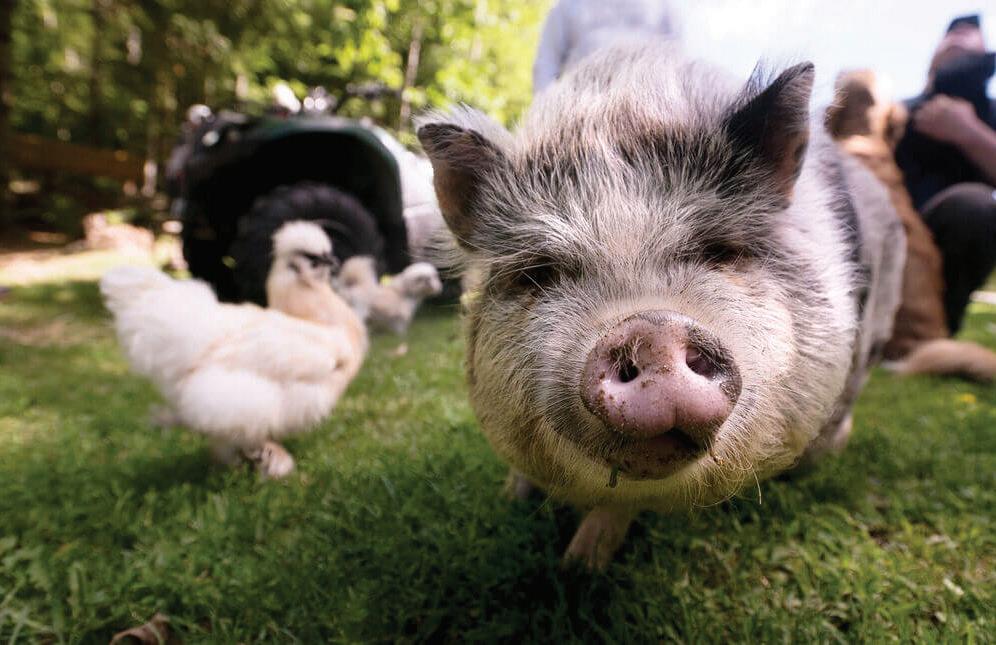


Stop
















Best Darn Donut in the Lakes Region!
Available at:
235 Union Ave., Laconia
Lake Town Store - Alton
Alton Village Store
Alton Circle Store
Wolfeboro Corner Store
Three Sisters in Wolfeboro
Meredith Mobil
235 Union Ave., Laconia • 603-707-1346 • Served daily till they’re gone. Closed Mondays & Tuesdays (Open at 4am for hardworking early risers!)



Sept. 21, Summer Music Series, Family Affair, 3 – 6 p.m., Gunstock Barrel Bar and Grille, 719 Cherry Valley Rd., Rt. 11A, Gilford, 603-293-4341, www.gunstock.com.
Sept. 21, Wildlife Photography From the Water, with Matt Cohen, 9 a.m. – 1 p.m., meet at Lee’s Mills Boat Launch in Moultonborough; bring/rent your own kayak/canoe; DSLR and smartphones), Artworks Gallery, 603-323-8041, www.chocoruaartworks. com.
Sept. 21-22, Falling Leaves Craft Fair, 9/21: 10 a.m. – 5 p.m.; 9/22: 20 a.m.-4 p.m., Tanger Outlets, 120 Laconia Rd., Rt. 3, Tilton, Joyce’s Craft Fair, 603-528-4014, www. joycescraftshows.com.
ArtWorks Gallery & Fine Crafts/CCAC, art, workshops and events, open year-round with seasonal hours, 603-323-8041, 132 Rte. 16, Chocorua, www.chocoruaartworks. com
Bad Mom Night, every Thurs., Trenta, 30 Middleton Rd., Wolfeboro, 603-515-1068, www.trentanh.com
Barnstead Farmers Market, Saturdays, 9 a.m. – 1 p.m., 1 Parade Circle, Barnstead, nhbarnsteadfarmersmarket1@gmail.com, www.barnsteadfarmersmarket.com.
Belknap Mill, 25 Beacon St. East, Laconia, gallery and textile museum, events and programs, 603-524-8813, www.belknapmill.org.
Bristol Farmers Market, 10 a.m. – 2 p.m., Saturdays, Millstream Park, Rt. 3, Bristol, bristolopenairmarket@atlanticbb.net.
Canterbury Shaker Village, walking trails, tours, Shaker Rd., Canterbury, 603-7839511, www.shakers.org
Castle in the Clouds, Rte. 171, restaurant, music, walking trails, tours, events, Moultonborough, 603-476-5900, www.castleintheclouds.org.
Coffee Hour, 10 – 11 a.m., coffee, tea and snacks, Effingham Public Library, 30 Town House Rd., Effingham, 603-539-1537, Effingham.lib.nh.us.
Country Music Brunch, Sundays, brunch food & music, Beans & Greens Farm Pavilion, 245 Intervale Rd., Gilford, 603-293-2853.
Country Village Quilt Guild, 1:30 - 3:30 p.m., meets first and third Wednesday of each month, Public Safety Building (back entrance to Police and Fire Dept.), Rte. 25, Moultonborough, countryvillagequilters@gmail.com.
Cruise Night, 5 – 7 p.m., Thursdays, 50/50 raffle, prizes, Tilt’n Diner, 61 Laconia Rd., Tilton, 603-286-2204. (Thursdays until Oct. 26)
Dam Brewhouse, events, 1323 NH Rte. 175, Campton, 603-726-4500, www.dambrewhouse.com.
Exhibit: Lucknow’s Laborers: The People Who Built and Cared for Tom Plant’s Estate, Castle in the Clouds Carriage House (gallery), Rt. 171, 455 Old Mountain Rd., Moultonborough, www.castleintheclouds.org
Family Craft Day, 10 a.m. – 2 p.m., first Saturday of each month, free and fun for all ages, Belknap Mill, 25 Beacon St. East, Laconia, 603-524-8813, www.belknapmill.org.









First Friday Receptions, through Dec., 5 - 7 p.m., refreshments, conversation & art, ArtWorks Gallery & Fine Crafts, 603-323-8041, 132 Rte. 16, Chocorua, www.chocoruaartworks.com
Frank Bolles Nature Reserve, walking trails, off Rt. 16 to Chocorua Lake Rd., Chocorua, www.chocorualake.org.
Freedom Gallery, artwork/exhibits by area artists, 8 Elm St., Freedom, call ahead for hours: 610-762-2493.
Freedom Village Store, variety of goods from artisan items to baked goods and more, 11 Elm St., Freedom, call for info/hours: 603-539-3077, www.freedomvillagestore.org.
Friday Painters, 12:30 - 3 p.m., meet weekly, Mt. Washington Valley Arts Assoc., Gibson Center, 14 Grove St., N. Conway, ken@gibsoncenter.org.
Gilmanton Farmers Market, through Oct. 6, 11 a.m. - 2 p.m., Sundays, local vegetables, flowers, plants, crafts, baked goods, live music and more, 1385 NH 140, on lawn of Gilmanton Year Round Library, Gilmanton Iron Works, 603-491-1687, www.gilmantonfarmersmarket.com
Guided Group Tour, history and machines of the historic Belknap Mill, 25 Beacon St. East, Laconia, pre-register: jill@belknapmill.org, 603-524-8813, Monday-Friday.
Indoor Pickleball, 5 p.m., Sandwich Central School gym, Sandwich, every Tues., Wed. & Fri., parksandrec@sandwichnh.org
Kirkwood Gardens, free, open to public year round, Rt. 3, Holderness, tour the gardens, www.nhnature.org, 603-968-7194.
Ladies of the Lake Quilt Guild, 10 a.m. - 2 p.m., meets second and fourth Wednesday of each month, First Congregational Church, 115 Main St., Wolfeboro. A second group meets Mondays from 10 a.m. – 2 p.m. at the Community Center, 22 Lehner St., Wolfeboro, www.llqg.net
Lake Winnipesaukee Sailing Association, youth and adult sailing lessons & competitions, Gilford, www.lwsa.org, 603-589-1177.
Lakes Region Art Association, exhibits and classes, Suite 300, Tanger Outlet, Rte. 3, Tilton, 603-998-0029, www.lraanh.org
Laverack Nature Trail at Hawkins Brook, nature trail on boardwalk, free, trail starts to the left of Meredith Village Savings Bank, Rte. 25, Meredith, 603-279-9015.
League of NH Craftsmen Meredith Fine Craft Gallery, handmade crafts and art for sale, workshops, 279 Daniel Webster Highway, Meredith, 603-279-7920.


Loon Center, walking trails, 183 Lees Mill Rd., Moultonborough, 603-476-5666, www.loon.org
Makers Mill, a variety of workshops, arts and crafts classes and more, 23 Bay St., Wolfeboro, 603-569-1500, www.makersmill.org
Making Strides, 8 – 9 a.m., drop-in walking for groups or singles, Ossipee Town Hall, no pre-registration required, 55 Main St., Center Ossipee, takes place various times: www.ossipee.recdesk.com.
Market on Main, 3 – 6 p.m., farmers market, every other Wed., through Oct. 2, 115 Main St., Alton, www.altonmarketonmain.com, 513-519-8264.
Meredith Public Library Bookstore, run by Friends of the Meredith Library, open weekly: Wed. 10 a.m. – 6 p.m., Thurs. & Fri. 10 a.m.- 4 p.m., Sat. 9 a.m. – 1:30 p.m., lower level, Meredith Public Library, 91 Main St., Meredith, 603-279-4303, www.meredithlibrary.org.
Model Yachting, 1 – 4 p.m., Tues. & Thurs., Back Bay Skippers at Cotton Valley Rail Trail, Bridge Falls Path, Wolfeboro, watch radio controlled model yachts, NH Boat Museum, schedule: www.nhbm.org.
Molly the Trolley, take tours/rides of Wolfeboro area aboard the fun trolley, info/ schedules: 603-569-1080, www.wolfeborotrolley.com
M/S Mount Washington Cruises, narrated cruises of Lake Winnipesaukee, day & evening cruises, M/S Mount Washington, 211 Lakeside Ave., Weirs Beach, 603-366BOAT, www.cruisenh.com
New England Racing Museum, 10 a.m. – 4 p.m., open Saturdays, 922 NH Rte. 106 N., Loudon, www.NEMSMUSEUM.com
NH Boat Museum, boating exhibits, programs, boat building workshops, 399 Center St., Wolfeboro, 603-569-4554, www.nhbm.org
NH Farm Museum, old-time farm events, tours, 1305 White Mt. Highway, Milton, 603-652-7840, www.nhfarmmuseum.org
Newfound Lake Eco-Tours, informative/scientific tours of Newfound Lake, runs until mid-Sept., Newfound Lake Association, www.newfoundlake.org, call for hours/dates of operation: 603-744-8689.
Outdoor Nature-Based Storytime for Young Children, 10:30 a.m. - 1:30 p.m., Tuesdays, Cook Memorial Library, 93 Main St., Tamworth, 603-323-8510, www.tamworthlibrary.org.
Prescott Farm Environmental Education Center, 928 White Oaks Road, Laconia, www.prescottfarm.org. Call ahead for event information and to inquire if program pre-registration is necessary: 603-366-5695.
Quilting Group, 1 - 4 p.m., meets every 2 weeks, Ossipee Public Library, 74 Main St., Ossipee, schedule/info: 603-539-6390
Remick Country Doctor Museum & Farm, events, tours, 58 Cleveland Hill Rd., Tamworth, 603-323-7591, www.remickmuseum.org.
Roller Skating Night, 5 p.m., Mondays, bring your own skates, for age 18 and up, Ossipee Town Hall, 55 Main St., Ossipee, info/updates: 603-539-1307, www.ossipee.org.
Rug Hookers, 10 a.m. – noon, meets Tuesdays, Tuftonboro Free Library, 221 Middle Rd., Rt. 109A, Tuftonboro, 603-569-4256.
Sculpture Walk, tours of outdoor sculptures around downtown/lakeside areas of Meredith, free, Greater Meredith Program, maps: 603-279-9015.
Sing-Along Night with Jim Tyrell, 5:30 – 8:30 p.m., Thursdays, Beans & Greens Farm Pavilion, 245 Intervale Rd., Gilford, 603-293-2853.
Song and Jam Circle, 6:30 – 8 p.m., community created jams and song circle, 3rd Monday of each month, Runnells Hall, 25 Deer Hill Rd., Tamworth, free, bring your favorite instruments, Arts Council of Tamworth, 603-584-2712, www.artstamworth.org
Squam Lake Cruises, family/educational cruises to look for loons & wildlife, Squam Lakes Natural Science Center, Holderness, www.nhnature.org, 603-968-7194.
Squam Lakes Natural Science Center, exhibits, nature trails, events, cruises, 23 Science Center Rd., Holderness, 603-968-7194, www.nhnature.org
Tamworth Farmer’s Market, 9 a.m. - noon, Saturdays, 30 Tamworth Road, Tamworth, www.tamworthfarmersmarket.org
Tamworth History Center, 25 Great Hill Rd., Tamworth, info: www.tamworthhistorycenter.org.
That Trivia Guy, 6 – 9 p.m., Wednesdays, individuals or groups play trivia games with host, Beans & Greens Farm Pavilion, 245 Intervale Rd., Gilford, 603-293-2853.
The Market at the Weirs, 10 a.m. – 1 p.m., Saturdays, fresh produce, meats and artisan crafts, through Oct. 5, Weirs Community Park, 49 Lucerne Ave., Weirs Beach, email: bamm-nh.org., www.themarketatweirs.com
Tuftonboro Country Bluegrass and Gospel Jam, 6:30 - 9:30 p.m., Tuesdays, donation requested, Old White Church, Rte. 109A, Center Tuftonboro, across from Tuftonboro General Store, 603-569-3861.
Wolfeboro Farmers Market, noon – 3:30 p.m., Thursdays, The Nick, 10 Trotting Track Rd., Wolfeboro, email: wolfeborofarmersmarket@gmail.com, www.wolfeborofarmersmarket.com.
Wolfeboro Table Tennis, meets Wednesdays from 4 – 6 p.m., in basement of All Saints Church, Wolfeboro, all skill levels welcome, $5 admission charge each week, info: 603-520-5651.
Wright Museum of WWII, exhibits and lectures on life on the home front during WWII, 77 Center St., Wolfeboro, 603-569-1212, www.wrightmuseum.org




















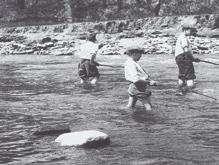




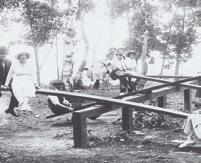
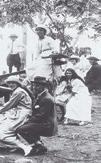

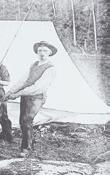
By Kathi Caldwell-Hopper
As children head back to school and begin another year of learning, they probably aren’t thinking about their grandparents and great-grandparents and others doing the same thing many years ago.
One hundred or more years ago, getting an education in New Hampshire wasn’t as attainable as it is today. Many children walked a distance to school, braving rain snow, and cold. School buses were nonexistent and if there was a family horse or mule, it was busy working in the fields and not available to transport young ones to school.
Gilford, New Hampshire had a variety of schools in the olden days and some were better equipped than others. In the 1860s, one such school, in Gilford’s District No. 2, had just four weeks of school per summer for its 13 students. In other Gilford districts which were wealthier, such as No. 7, school ran for 11 weeks in the summer. (The educational timetable for a school’s operation was different in those days, depending upon the schedule when children needed to be home to help with harvesting and other work and times of the year when their help was not needed, and they were free to go to school.)
According to The Gunstock Parish by Adair D. Mulligan, transportation was a major consideration in the school districting of Gilford. Because travel
was difficult in the 1800s, there were many tiny schools in each community. Children walked to school, and if a child lived too far away to make the daily trip, he or she might board with a family who lived near a school.
In the 1830s, Ashland, New Hampshire, like many New England towns, was remote geographically. The town was lucky to have as a resident, Miss Nancy Perkins, who saw the need for a school in the area. Miss Perkins rolled up her sleeves and started a private high school in the Vestry of the town’s Baptist church. The school was in session from 1836 to 1847, according to Ashland, New Hampshire Centennial 1868 to 1968. She was a gifted teacher; parents and students alike sang her praises. Indeed, she must have been a good teacher with a love for passing on knowledge because after her marriage to Oren Cheney, together they helped found Bates College.
Schooling was different in the 1800s from what we experience today. In the 1880s in Ashland, grammar school students were required to take an exam written by the school board each term. Pupils had to answer 60 percent of the test questions correctly to advance to the next grade. Old schoolhouses –usually consisting of just one room — were the norm for decades. The little buildings we see here and there in rural areas are now sitting empty or have been refurbished into homes. But once


upon a time, the schoolhouses were every town’s answer to education, and local children from age 5 to 15 or more all sat in one room, taught by a single adult woman or man. The buildings were also used at times for town meetings or social occasions, serving many purposes before town halls came into being.
Conditions in many village schools were on par with the rest of society’s housing at the time: a woodstove warmed the space, and students were often expected to split and carry wood to feed the heat source; a bucket of water served as refreshment and another was for washing hands. Outside, usually hidden behind bushes, sat the outhouse.
The Lakes Region had many oneroom schoolhouses and a few remain today and have found use as museums and historical societies.
A very unusual school was in session at Canterbury Shaker Village in Canterbury from the 1800s into the 1900s. The Shaker religious group welcomed and cared for many orphaned or foster children over the years and gave the children an excellent education at the Shaker school. The one-room, one-story school was erected in 1823 on the grounds of Shaker Village. As the population of the Shaker community grew, with it came more children and in 1863 the school was expanded to a
two-story structure. Area children were allowed to attend the school as well as the Shaker children, and several local families sent their children to the Shakers each day. It is said the students got a solid education which benefitted youngsters when they went out into the world.
In Sandwich, NH, the Lower Corner School was a place of learning in the mid and late 1800s. Most towns at the time were in remote locations and many families lived in even deeper rural areas. Small schools were built to serve children in various outlying areas.
The Lower Corner School began in 1825 as the John Quincy Adams School, according to www. sandwichhistorical.org, the website of the Sandwich Historical Society. At that time, citizens in Sandwich voted for a tax of $193.70 to build a schoolhouse. A former student, Henry Holmes, wrote of attending the school in the 1840s. He recalled the school was small with a plank door, tiny windows that were placed high and the structure had underpinnings of stone. A big fireplace heated the building. Big four-foot chunks of wood fed the fire that kept teachers and students warm during the cold winters. Fireplaces are notorious for providing uneven heat
• Yesteryear continued on page 19









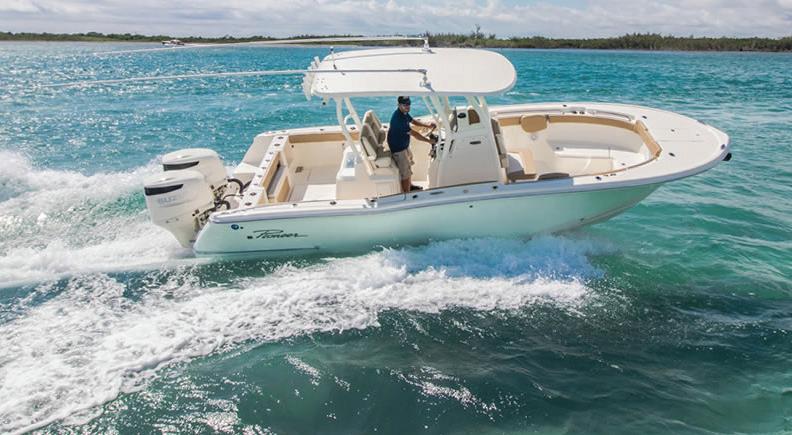







and this one, as the former student recalled, provided heat that “burned the face while the back was freezing.”
Students who sat at the back of the room took turns moving to the front to get warm during the day.
In the 1880s the school was renamed the Lower Corner School. By the 1930s an addition brought indoor toilets and storage facilities to the school and a playground. In the 1940s the school closed and students traveled to the Center School in the town.
Children in the Cook settlement of Moultonborough had a schoolhouse near a spring. The school building was modest in size; one child who attended the school was said to be the envy of all the other students because he could coast down from his home to the schoolhouse door in snowy winter weather, according to Moultonborough to the 20th Century, a publication of the Moultonborough Historical Society Bicentennial Issue 1963. Schoolchildren had something of a walk to get to school – down a steep hill, through fields, and over stone walls and fences. Even with the arduous walk each day, some students were said to have perfect attendance.
The Village School in Moultonborough was the site of learning for many years. During
the early part of the 1900s, the oneroom school was located opposite the Moultonborough Town House. By 1913 the town improved the school as the population grew. An assistant teacher was hired in the 1920s and the school was divided and two regular teachers were added to the staff. A jacketed stove was secured for the school and a note in town reports for 1923 stated, “The new stove makes it possible to have the rooms comfortable as far as the heat is concerned.”
In 1925 a new school was built and housed elementary school-aged children. In her book, I Remember Moultonboro New Hampshire by Frances A. Stevens, she recalled being a student at the school in the late 1920s.
“As I remember, when this school was first built there was a big stove with a jacket around it in the back corner of the room. In the winter when it was really cold, she would have us gather around the stove for our classes. It wasn’t long before they put in a furnace with steam radiators.”
On the other side of Lake Winnipesaukee, schooling was important in New Durham. The town’s original land grant specified that a portion of the community’s money be set aside for a schoolhouse. In 1779 the town raised money to have a town school and for some years after, money was voted for schooling. At this time there were no schoolhouses in the town
and schoolmasters were hired who traveled from town-to-town boarding with different families. These men would teach the children of the area the basics: reading, writing, and spelling. By the 1800s schools were built in New Durham. In the late 1800s, improvements were made with the installation of blackboards, iron stoves, and desks. In 1906, the annual report of the school board stated “We cannot expect a woman to teach in a town paying $6.50 to $7.50 for 24 weeks in a year when she can obtain $8.00 to $9.00 per week for 34 to 36 weeks in the year. She will most certainly choose the latter.”
According to The History of New Durham, New Hampshire by Ellen Cloutman Jennings, the original 14 New Durham schools had shrunk to just seven with a school budget of about $1,000. Teacher’s salaries, supplies, and repairs came out of this budget and the board closed schools when necessary if enrollment dropped drastically.
Further north in the Plymouth, New Hampshire area, the village of Dorchester had a small schoolhouse that was built in 1808 and originally
called the North District School. It was used as a one-room school for area children until 1926. The school’s last teacher was Lena Bosence Walker. A preserved one-room schoolhouse is part of the Wolfeboro Historical Society on South Main Street in Wolfeboro. The Clark House Museum Complex of structures at the site includes the Pleasant Valley School.
The one-room school was built about 1805 on land in South Wolfeboro in the area known as Pleasant Valley according to information at www. wolfeborohistoricalsociety.org. Known for some time as District #3 School, some residents called it the Townsend School, because it was close to the home of Reverend Isaac Townsend, Wolfeboro’s first minister. (Perhaps the reverend visited the school and taught religious classes to the children?)
The school was crude by today’s standards, as were most in New England. Local children learned to make do. All grades were taught in one large room. The enrollment of students ranged from 20 to 50. In 1959 the schoolhouse was moved to its present location at the Clark Museum Complex.






















































By Lee Caldwell
The Mt. Kearsarge Indian Museum in Warner has been recognized as one of the top ten Native American Museums in the United States by PowWows. com, a website that celebrates Native American culture. Founded in 1990 by Bud and Nancy Thompson, the museum is celebrating its 34th season.
Andrew Bullock, museum director for the past six years and one of its first trustees, speaks to the museum’s unique blend: “We have seven different galleries arranged geographically all over North America. A lot of people, they come here, assume we’ll have some Abenaki baskets from New Hampshire, so they are really surprised that we have such a diverse collection. The way the museum is arranged through the seven galleries, people can compare the clothing styles, the transportation, or housing styles between the different regions.
“The two things that I like to encourage people to come away with after they come to the museum is that native people are still here, alive and well in New Hampshire, even though the state of New Hampshire doesn’t recognize any native people. So that is one tenet that we want to impress upon people. And the other is that it is not one monolithic culture all across North America.”








He continued, “As far as artifacts, we have clothing, we have tools, we have examples of housing, basketry, pottery, and textiles. And again, we emphasize that, even to this day, but certainly traditionally, people were harvesting materials locally. So, if they’re going to make a basket, they need to know what plant to harvest, when to harvest it, and how to prepare it before they even make a basket.”













Beginning a tour of the museum, Andrew comments, “We call this space our Contemporary Art Gallery. This exhibit is called Baskets: Carriers of Life and Spirit, and we’ve got a combination of things, some contemporary baskets made by some native folks here in the Northeast, some baskets from our collection, and some of the tools that people need to make a basket.”
He points to an ash log. “A vast ma-

















jority of the baskets in the Northeast are done using the ash log. We also have some sweet grass which is pretty integral to most of the Northeastern baskets. Some consider it medicinal and its aromatic qualities are remarkable.”
This year, the museum will offer a series of workshops in conjunction with the exhibit.
“One is going to feature Sherry Gould, who is a basket-maker, and she is going to demonstrate some of the techniques of making baskets,” he said. “We will also talk about how it is important to keep the tradition alive. And then we will have some other fun workshops, like a basket printing for kids. We are hoping to have a naturalist come and talk about the Emerald Ash Borer, which are decimating the ash trees. We want to have a kind of holistic conversation.”
Jennifer Lee, a contemporary basket-maker, led a workshop with 15 participants making baskets of ash bark. Andy states, “She just a wonderful resource because she can explain the technical part of baskets that talks about harvesting it.”
Exhibits in the front display case change periodically. Currently, the case contains a selection of Southwest-
• Mt. Kearsarge continued on page 21
An alluring destination showcasing farm-to-fork, with an old world inspired New England feel.







continued from page 20
ern Kachina dolls, donated by Mike and Rita Griffin.
As we walk down the hallway, there is a display case dedicated to Bud Thompson, with a picture of Chief Sachem Silver Star; a dugout canoe made of white pine and a birch bark canoe, relics of New Hampshire’s first transportation highway — the water.
Upon entering the Northeastern Gallery (New England, New York, and Maritime Canada.), to the right is an example of a wigwam made of logs and birch bark. Exhibit items include ash baskets, porcupine quill baskets, moose hair embroidery, and fancy beadwork, some created for the tourist trade. One of Bud’s favorite pieces was an enormous-sized embroidered moose hair tablecloth or altar cloth, Andrew notes.
“But remember, even the colonial homes in the 1700s and 1800s relied on these baskets to store their clothing and their food, at a time before Tupperware containers,” he said. “Then they became more fancy and more decorative.”
Andy then veers onto a different and important topic. “This is one of our segues into hard conversation, like boarding schools and residential schools and things like that. And people don’t realize that boarding schools went (some of them) until 1990. And so, it is important for us to talk about beautiful art and all that, but I think it is also incumbent on us to talk about boarding schools, missing and mur-
dered indigenous women, Emerald Ash Borers, and the Trail of Tears.”
The Southeast Gallery has baskets made of river cane, pine needles, and honeysuckle vine; a stand-and-pole cypress canoe; examples of Seminole patchwork; a selection of Indian corn; a grinding stone; mortars and pestles; and a hoe made from an animal’s shoulder blade.
Andrew shares that, “A lot of people don’t realize that corn started out as not much more than a glorified grass. But there are hundreds and hundreds of varieties of corn, even to the extent some of the corn had husks on each kernel, so you can imagine, to have a meal you really have alot work ahead of you. But they were actually able to understand that sometimes the kernels would come out without a husk, and they would save and plant that seed next year.”
The Southwest Gallery showcases a mural of an Anasazi cliff dwelling. Andrew comments that the Navajo came late to the Southwest and did not start making blankets until the Spanish introduced sheep. Later, the traders encouraged them to make rugs, not blankets, and then sold the rugs to the tourists who came on the Santa Fe Railroad.
Moving on to the pottery, he comments, “Again, making some generalizations, but this is done using the coil method. So, you take a rope of clay to make the shape you want, finish it with a smooth stone or another broken piece of pottery to get the shape. Fire it in a sheep dung fire rather than an electric kiln or something like that. And all the decoration is hand-painted. And again,
they had to know where to get the clay and they have secret places where they get the good stuff.”
In addition to artifacts, contemporary artwork also is showcased.
“Here is contemporary artwork from the Southwest, so people realize that native artists are still doing wonderful things,” he said.
“A lot of people are familiar with Southwest turquoise jewelry. Pre-contact, they would maybe drill a hole in a turquoise nugget and make a necklace. Silver smithing didn’t really start until the Spanish came and taught some of those skills.”
A giant Apache basket called an olla was, according to Andrew, another of Bud’s favorite pieces. Woven throughout the basket as a design element is a material called devil’s claw.
“This material is called devil’s claw, which is closer to cactus, so they can actually peel and weave it into the design, so you can see that it is both inside and out. So it is integral to the basket.”
The California Gallery is a small exhibit, but separate because of its distinctive and unique basketry, using such elements as red bud, maiden hair fern, willow, and devil’s claw.
Pointing to one, Andy says, “This basket here is quite a remarkable one. Those little feathers on the end are a quail’s topnotch and each quail has only one. So this one used lots of quail, probably for a prestigious gift basket.”
The Great Plains Gallery has everything, from a mounted buffalo head (at a height to illustrate the buffalo’s size) to a tipi and a horse pulling a travois. Andrew continues, “A lot of people
are somewhat familiar with tipis, and buffalo or bison. And so we started the conversation here with pre-contact. Again generalizations, but a lot of people on the plains are at least semi-nomadic. So we have got to remember that they didn’t see one bison, you’d see 5,000 or 10 square miles of bison coming out here. But we talked about being semi-nomadic and getting virtually everything they need from the bison.”
He says, “Around 1850, they started to transition to canvas tipis. It’s a lot lighter. A buffalo tipi would probably require eight buffalo hides. Eight bison, sew them together and then you’ve got a cover that weights 300 pounds. So the practicality of canvas. There is a lot of engineering in a tipi. What we are looking at is the cover, which is rolled up so we can see inside. But, ordinarily, the cover would be down, and there would be about a six- or eight-inch space at the bottom. And if you look in the back, you can see an interior wall that goes about six feet up. That’s called the liner, and you’ll notice that it goes all the way down to the ground. What it does is create a natural draft so the air comes up between the walls and pulls the smoke out the top. Okay, so they’re quite ingenious, quite portable, and quite practical.”
He continues, “Once horses were introduced by the — again, mostly the Spaniards, but also other groups — it totally revolutionizes the plains environment. It was a lot easier to hunt a
• Mt. Kearsarge continued on page 22
We can no longer take the safety of our water for granted. When you turn on your faucet, bathe your child, water your lawn, or flush your toilet, you want to know that your water is safe and clean. We will test and explain your water chemistry in a way that is easy to understand and then recommend the most efficient, effective and economical water treatment solution, custom fit to your needs.

















bison on horseback. A lot easier to haul a tipi. It really changes the dynamic of the plains. The exhibit of saddles really, I think, explains the diversity, creativity, and thought.”
Other displays include catlinite (tobacco) pipes with bead-embroidered pipe bags, bear claw necklaces, decorated blanket strips, and women’s beaded dresses.
Andrew admits that his “main weakness is beadwork. I love the history of where the beads originally came from and how they’re made and have a great appreciation for the work going into them. Almost all of the glass seed beads that you see in the museum were made in Murano and Venice, Italy, and have been traded to North America.”
Andrew indicates some signs saying, Adopt an Artifact. “We have this campaign once a year, and folks can adopt symbolically an artifact for the year and it’s a great way to support the museum.”
We end the tour with the Northwest Coast (including Alaska) Gallery with its baskets made of cedar bark, birch bark, and sea grasses, and soap stone carvings.
Andrew points out, “Again, they’re using materials that they found locally. I’m always intrigued to see that little basket with the ivory finial on top made from baleen.”
Reminiscing, Andrew talks about a program where the museum partnered with the McAuliffe-Shepard Discovery Center in Concord to gaze at the night sky. “And at one point, this kid came up to me and said, ‘You know, I’ve never been outside in the dark.’ And to think, to think, that we could be part of that experience for kids. I think that is pretty amazing.”
The museum’s grounds have a Medicine Woods Walk and Arboretum with 75 species of trees, where one can explore and learn about Native uses of plants for food, medicine, and crafts.
more than 20 traders with handmade crafts.
The Harvest Moon Festival is planned for September. There will be a family day of nature presentations, hands-on crafts, and native foods.
The Beadstock event celebrates beads from around the world, with bead vendors, speakers, demonstrations, raffles, and more.
The Mt. Kearsarge Indian Museum, located at 18 Highlawn Road in Warner, is open May through October, Monday through Saturday, 10 a.m. to 4 p.m., and Sunday noon to 4 p.m. Guided tours are offered at 10:30 a.m. and 1:30 p.m. most days, and Sundays at 1:30 p.m. only. For more information, •
Pointing out a woolly mammoth tooth, he comments, “So, and people say, ‘Why the heck do you have a woolly mammoth tooth?’ And to me it’s a natural fit. When we have third-graders to come study native people, they say, ‘It’s cool,’ or ‘gross’, or whatever it is. And then we can talk about the next group that comes through (Ph.D. candidates or whatever). So yeah, they are finding these things up there now because of global warming. All these things are washing out of riverbanks. So that’s out connection to the environment. And people, I think, understand it when you put it in those terms.”




The 23rd annual Intertribal Powwow will take place at the museum on July 13-14, with singing, dancing, food, and
Join the Newfound Lake Region Association (NLRA) for a guided hike in conserved lands on Plymouth Mountain at 9 a.m. on September 20. Land conservation is one of the best ways to protect the health of Newfound Lake and other water bodies, as forested areas at higher elevations help soak up rainwater and limit the pollution that makes it into waterways. Plymouth Mountain forms one piece of the watershed around Newfound Lake, and protected land along its slope and at the summit helps protect the lake below. Led by NLRA volunteers and staff, participants will explore Fauver Link and Sutherland Trail on Plymouth Mountain, see views to the north, and get a new perspective on keeping the watershed healthy. This moder-
ate-to-hard, approximately 4-mile hike has some steep sections and exposed rock at the top. Registration is required and space is limited. Register online at NewfoundLake.org/events or call 603-744-8689.
The Newfound Lake Region Association’s mission is to protect Newfound Lake and its watershed. Along with educational programs to foster stewardship of our natural resources, the NLRA performs water quality monitoring, stormwater management, invasive species monitoring and prevention, and land conservation. Learn more about NLRA’s work, including upcoming events, at NewfoundLake. org













